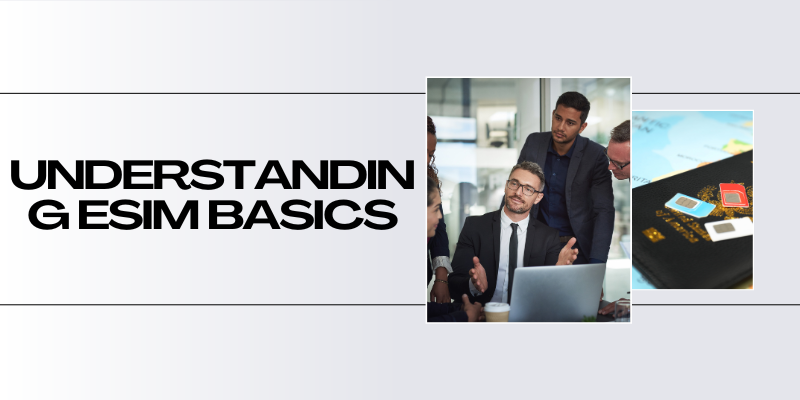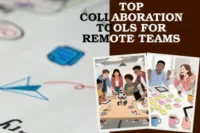Hidden Uses of eSIM in Developing Countries – What No One Tells You
Published: 11 Aug 2025
In many developing countries, mobile access is more than convenience—it’s a lifeline. Yet, most people think eSIM is just for frequent travelers or high-end phones. The truth is, it’s unlocking unexpected opportunities in places where traditional connectivity struggles. From rural farms to mobile health clinics, eSIM is quietly changing lives. Let’s uncover the hidden ways it’s making a difference.
Understanding eSIM Basics
An eSIM (embedded SIM) is a small, programmable chip built directly into a device. Unlike a traditional SIM card, you don’t insert or swap it.

Instead, mobile profiles are activated digitally. This means you can connect to a network without visiting a store or handling a physical card.
How it’s different from a traditional SIM:
- Physical SIM – A removable plastic card tied to one network unless replaced.
- eSIM – Embedded in the device, can store multiple network profiles, and can switch between them instantly.
Key benefits, especially in developing regions:
- Remote provisioning – Plans can be activated over the air, removing the need for physical distribution.
- Flexibility – Switch between operators without changing hardware.
- Space-saving design – Leaves more room in devices for other components like bigger batteries.
- Durability – No risk of loss, breakage, or water damage like with removable SIM cards.
According to insights from AlixPartners, eSIM is more than a tech upgrade—it’s a connectivity enabler. By removing physical constraints, it allows faster network rollouts, easier scaling of IoT devices, and broader service coverage. In countries where reaching remote users is costly, this flexibility can be game-changing.
Why eSIM Matters in Developing Regions
In many developing countries, getting a physical SIM card can be harder than it sounds. Remote villages may be hours away from the nearest telecom store. Supply chains can be slow. Even in cities, regulations or shortages can cause delays. eSIM changes that reality.
1. Remote provisioning removes barriers
With eSIM, mobile plans can be activated instantly over the air. No shipping. No queuing. No paperwork delays. This is a major advantage in places where infrastructure is thin or travel is expensive.
2. Rapid deployment in underserved areas
Telecom operators can reach new customers without setting up distribution hubs. Health workers, farmers, and field agents in rural zones can get connected the same day, even if they’re hundreds of kilometers from a store.
3. Cost-efficiency for budget-sensitive users
Every trip to buy a SIM costs time and money. eSIM eliminates that overhead. Users can compare plans digitally and switch to cheaper providers without buying new hardware. This flexibility is crucial where budgets are tight and data costs are high.
In short, eSIM is more than a convenience—it’s an equalizer. By removing physical barriers to connectivity, it gives rural and low-income communities a faster, cheaper way to get online.
Hidden or Under-the-Radar Uses of eSIM
Most people think of eSIM as just a modern way to activate mobile plans. In reality, it’s quietly powering solutions that go far beyond regular connectivity—especially in developing countries. Here are some lesser-known but high-impact use cases.
A. Emergency Connectivity & Disaster Response
When disasters strike—floods, earthquakes, or political unrest—communication lines are often the first to fail. Physical SIM distribution can take days or weeks. eSIM allows networks to be restored instantly by provisioning service remotely.
- First responders can receive pre-configured eSIM profiles before entering a disaster zone.
- Relief agencies can create temporary coverage networks without building physical distribution points.
This speed can mean the difference between life and death in critical situations.
B. Mobility & Migration
Millions of people in developing countries live highly mobile lives—cross-border traders, migrant workers, refugees, and nomadic communities. Switching SIM cards at every border is costly and inconvenient.
- With eSIM, one device can store multiple network profiles for different regions.
- Users keep their number and data access without interruption, reducing costs and avoiding service gaps.
This is particularly vital for maintaining family contact, sending remittances, and accessing digital services while on the move.
C. Micro-Entrepreneurship & Pop-Up Economies
From market stalls to roadside food carts, small businesses are the backbone of local economies. These ventures often need instant connectivity to run POS systems, manage inventory, or use delivery apps.
- eSIM enables same-day activation for temporary or seasonal business setups.
- Entrepreneurs can start trading without visiting telecom offices or waiting for SIM deliveries.
When every day of lost business matters, eSIM’s immediacy is a game-changer.
D. Rural IoT & Agricultural Tech
In agriculture, timely data means higher yields and better resource management. But reaching rural sensors and trackers can be costly.
- With eSIM, IoT devices like soil monitors, weather stations, or livestock trackers can be updated and managed over the air.
- Farmers gain actionable insights without technicians traveling long distances.
This not only improves efficiency but also makes advanced technology accessible to remote farming communities.
E. Digital ID, e-Government & Health Initiatives
Governments and NGOs are increasingly using mobile platforms for identification, public services, and health programs.
- eSIM allows secure, tamper-resistant provisioning of SIM profiles tied to digital IDs or healthcare records.
- Vaccination tracking apps, subsidy distribution systems, and voter registration tools can be rolled out even in areas without SIM card vendors.
This capability can significantly expand the reach of social and healthcare programs.
In each of these scenarios, eSIM removes the physical bottleneck of connectivity. It’s not just about better tech—it’s about creating real-world solutions where they’re needed most.
Challenges & Considerations
While eSIM technology offers huge potential in developing countries, it’s not without its obstacles. For it to truly transform connectivity, these challenges need to be addressed head-on.
1. Awareness & Knowledge Gaps
Many people in developing regions have never heard of eSIM, let alone know how to activate one. According to 1GLOBAL, even in markets where eSIM is available, adoption lags because users rely heavily on familiar, physical SIM cards.
- Education campaigns by telcos, NGOs, and community tech hubs can help bridge this gap.
- Clear, local-language guides and customer support are essential to build trust in the technology.
2. Device Compatibility
Not all phones support eSIM—especially low-cost best budget smartphones that people are mostly loking for that dominate budget-conscious markets.
- Most eSIM-ready devices are mid-range or premium, which can put them out of reach for many users.
- To expand adoption, manufacturers need to bring eSIM capability into affordable smartphones, and governments or NGOs could incentivize such rollouts.
3. Infrastructure Limitations
Even with eSIM, a device still needs network coverage to connect. In remote areas, coverage gaps can limit the technology’s benefits.
- Expanding rural network infrastructure—through satellite partnerships, community cell towers, or low-power base stations—remains crucial.
- Without this, eSIM will be underutilized in precisely the areas it could help most.
4. Provider Lock-In Risks
One of eSIM’s selling points is flexibility—but not all providers make switching easy. Onomondo and AlixPartners note that some operators lock devices to their network or limit profile downloads.
- This can recreate the same monopoly issues seen with physical SIMs.
- Transparent, customer-friendly policies are needed to ensure users can freely change providers without hidden costs or technical restrictions.
eSIM can be a powerful tool for inclusion and innovation, but its success depends on tackling these barriers. Without awareness, affordable devices, better infrastructure, and fair provider policies, the full promise of eSIM in developing countries will remain untapped.
How Telcos, NGOs & Governments Can Leverage eSIM
The real power of eSIM in developing countries lies in how organizations use it to solve on-the-ground challenges. From enabling life-saving communications to powering small businesses, here’s how different stakeholders can turn eSIM into a tool for progress.
1. NGOs & Aid Groups
Nonprofits and humanitarian organizations often work in remote or crisis-hit areas where setting up traditional mobile infrastructure is slow and costly.
- Emergency Communication Kits: Pre-configured eSIM profiles can be sent digitally to field teams, enabling instant connectivity without waiting for physical SIMs.
- Remote Monitoring Tools: Aid groups can equip field devices—like health trackers, GPS units, or data collection tablets—with eSIM, so they can be updated and managed from a central hub.
- Disaster Relief Operations: Temporary networks can be deployed rapidly in response to floods, earthquakes, or displacement events, keeping rescue teams connected when it matters most.
2. Micro-Operators & Local Telcos
Smaller telecom providers can use eSIM to reach customers that larger players overlook.
- Modular Plans for Small Businesses: Market vendors, food carts, and mobile service providers can get short-term data plans activated instantly, helping them operate without downtime.
- Field Agent Connectivity: Organizations with traveling salespeople, delivery agents, or agricultural advisors can give each team member a tailored plan they can switch as they move between regions.
- Low-Cost Scaling: eSIM allows operators to expand coverage without the same distribution costs of physical SIM cards.
3. Governments
Public services can use eSIM to bridge gaps in access and speed up national digital transformation.
- Digital ID Programs: Secure, eSIM-based mobile profiles can store and verify national IDs, making them easier to access and harder to forge.
- Healthcare Outreach: eSIM-enabled devices in rural clinics can connect to central databases for vaccination tracking, telemedicine, and patient record management.
- Agricultural Extension Services: Government-backed apps for weather alerts, crop management advice, and market pricing can be preloaded on eSIM-enabled devices distributed to farmers.
When these three groups work together—NGOs providing reach, telcos providing infrastructure, and governments ensuring policy support—eSIM becomes more than technology. It becomes a catalyst for economic growth, social inclusion, and life-saving connectivity.
Real-World Examples / Case Studies
The value of eSIM in developing countries is best understood through real stories. These examples show how technology is being used in the field to solve problems and open new opportunities.
Case Study 1 – eSIM-Enabled Health Clinics in Rural Kenya
In remote Kenyan counties like Turkana, healthcare workers often travel hundreds of kilometers to reach patients. Traditional SIM cards were hard to source and replace in these regions.
- Solution: A non-profit health organization equipped mobile clinics with tablets and diagnostic tools connected via eSIM.
- Impact: Patient records could be uploaded instantly, telemedicine consultations became possible, and medical teams no longer faced days-long delays waiting for connectivity.
- Result: Faster diagnosis, improved vaccination coverage, and better tracking of chronic illnesses.
Case Study 2 – Seamless Connectivity for Cross-Border Workers in West Africa
Traders moving between Ghana, Togo, and Benin often faced roaming charges or downtime while switching SIM cards at each border.
- Solution: A regional mobile operator introduced multi-profile eSIM plans for cross-border workers.
- Impact: Users stored multiple network profiles on one phone and switched instantly without physical SIM changes.
- Result: Lower costs, uninterrupted communication, and increased use of mobile banking for cross-border transactions.
Case Study 3 – Street Food Vendors in Dhaka, Bangladesh
Street vendors selling snacks and drinks in Dhaka rely heavily on mobile payments but often move locations daily. Buying new SIMs or topping up physical cards was costly and time-consuming.
- Solution: A local micro-operator offered low-cost daily eSIM data plans, activated via QR code.
- Impact: Vendors could connect their POS systems anywhere in the city without visiting a store.
- Result: Increased sales, smoother payment processing, and higher customer satisfaction.
These cases prove that eSIM isn’t just a travel convenience—it’s a practical, adaptable tool that can help solve long-standing challenges in healthcare, trade, and small business operations across developing regions.
Future Outlook
The future of eSIM in developing countries looks promising, driven by rapid technology adoption and new applications emerging every year.
1. Growing Smartphone Penetration with eSIM-Ready Devices
Affordable smartphones with eSIM capability are already entering the market. As production costs drop and manufacturers target budget segments, more people will be able to access the benefits of eSIM without investing in high-end devices.
- Trend: Partnerships between telecom operators and handset makers to launch entry-level eSIM phones.
- Impact: Wider adoption in rural and low-income communities where connectivity gaps are most severe.
2. IoT Expansion Across Key Sectors
eSIM is set to play a major role in the Internet of Things (IoT) revolution, particularly in sectors critical to developing economies.
- Agriculture: Remote sensors for soil health, irrigation control, and pest monitoring can be managed entirely over the air.
- Logistics: Delivery fleets and supply chains can be tracked in real time, improving efficiency and reducing losses.
- Public Safety: Smart streetlights, surveillance cameras, and emergency alert systems can be connected without physical SIM replacements.
3. Digital Transformation in Government and Finance
eSIM’s flexibility makes it an ideal enabler for large-scale public and financial services.
- Government: Digital IDs, e-voting systems, and mobile-based public service apps can be provisioned securely, even in areas with no physical distribution channels.
- Finance: Mobile banking, digital wallets, and secure transaction systems can reach underserved populations instantly.
- Outcome: Faster rollout of nationwide digital initiatives with lower operational costs.
Looking ahead, eSIM adoption in developing countries will likely shift from being a niche solution to becoming a standard feature. With the right infrastructure investments, policy support, and affordable devices, eSIM could redefine connectivity—making it faster, cheaper, and more inclusive than ever before.
Conclusion
eSIM is far more than a tech upgrade—it’s a bridge to opportunity in developing countries. From powering rural health clinics to enabling small businesses and connecting people across borders, its hidden uses are transforming lives quietly but powerfully. Yet, to unlock its full potential, awareness, affordable devices, and fair policies are essential. With collaboration between governments, telcos, and NGOs, eSIM can become a cornerstone of inclusive connectivity—bringing the world’s most underserved communities closer to the digital future they deserve.
FAQs
eSIM enables you to activate and switch mobile plans digitally, eliminating the need for a physical SIM card. It’s useful for quick connectivity, multiple network profiles, and easy plan changes—especially in regions with limited access to SIM cards.
By eliminating the need for plastic SIM cards and their packaging, eSIM reduces waste and the carbon footprint from manufacturing and shipping. Over time, widespread adoption could save millions of plastic cards from landfills.
Some countries, such as China (mainland) and parts of Africa or the Middle East, have limited or no eSIM support due to local regulations. Availability depends on local telecom policies and device compatibility.
eSIM is embedded in the device, making it harder to remove or clone than a physical SIM. It supports encrypted remote provisioning, reducing risks of theft, tampering, or SIM swap fraud.
Currently, most eSIM-ready devices are mid-range or premium. However, manufacturers are starting to roll out affordable models with eSIM support, making the technology more accessible.
eSIM can be activated remotely, removing the need to travel long distances to buy a SIM card. This is especially valuable in rural areas with limited telecom infrastructure.
Yes. eSIM can hold multiple network profiles, allowing you to switch between personal, business, or regional numbers without swapping cards.
In most cases, eSIM costs the same as a physical SIM, but prices vary by operator. Some providers even offer cheaper eSIM plans due to lower distribution costs.
Yes. You can buy and activate international eSIM plans instantly without visiting a local store, making it a popular choice for travelers and cross-border workers.
Businesses can use eSIM for mobile teams, IoT devices, and remote monitoring systems. It enables quick deployment, easy plan management, and reduced downtime.

- Be Respectful
- Stay Relevant
- Stay Positive
- True Feedback
- Encourage Discussion
- Avoid Spamming
- No Fake News
- Don't Copy-Paste
- No Personal Attacks

- Be Respectful
- Stay Relevant
- Stay Positive
- True Feedback
- Encourage Discussion
- Avoid Spamming
- No Fake News
- Don't Copy-Paste
- No Personal Attacks





